
Original Film Writer
Na Londres dos anos 1950, um funcionário público mau humorado decide tirar uma folga do trabalho para experimentar a vida depois de receber um diagnóstico sombrio.
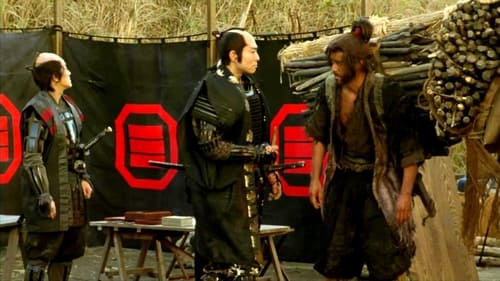
Original Story
Makabe Rokurota, o fiel protetor da Princesa, foi encarregado de transportar com segurança a Princesa Yuki e o tesouro de Akizuki para a estável Hayakawa. Eles se disfarçam de humildes catadores de lenha para atravessar os obstáculos criados por Yamana, e ao longo do caminho contam com a ajuda de Takezo (Jun Matsumoto) e Shimpachi (Daisuke Miyagawa), dois mineradores que escaparam dos trabalhos forçados em uma mina de ouro. Takezo e Shimpachi concordam em ajudar na esperança de escapar da opressão de Yamana e sonhando com a recompensa que Rokurota lhes oferece.
Conseguirá a Princesa chegar ao seu destino e libertar seu povo dos domínios de Yamana?

Screenplay
Remake of Kurosawa Akira‘s Ikiru

Screenplay
No Japão medieval, um velho senhor da guerra se aposenta, entregando seu império a seus três filhos. No entanto, ele subestima amplamente como o novo poder irá corrompê-los. O senhor de guerra japonês Hidetori Ichimonji decide que chegou o momento de se aposentar e dividir seu feudo entre seus três filhos. Seus filhos mai velho e do meio, Taro e Jiro, concordam com sua decisão e prometem apoiá-lo nos dias restantes de aposentadoria. O filho mais novo, Saburo, discorda de todos eles argumentando que há pouca probabilidade dos três irmãos permanecerem unidos. Insultado pela impaciência de seu filho caçula, o senhor da guerra o expulsa. Quando o senhor da guerra começa sua aposentadoria, ele rapidamente percebe que seus dois filhos mais velhos são egoístas e não têm intenção de cumprir suas promessas. Isso leva à guerra e só o banido Saburo pode salvá-lo.
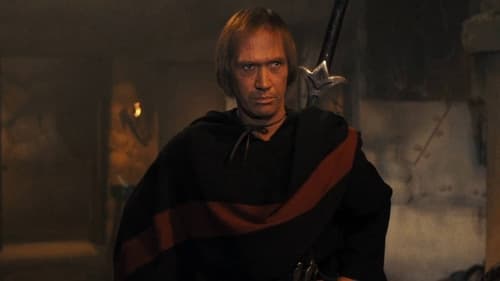
Original Film Writer
The mighty warrior, Kain, crosses the barren wastelands of the planet Ura, where two arch enemies, Zeg and the evil degenerate Balcaz, fight incessantly for control of the village's only well. Kain sees his opportunity and announces that his sword is for hire... but his eyes stay clearly on the beautiful captive sorceress Naja, and his newly awakened purpose.

Screenplay
Tomisaburo Wakayama is back with a new take on the classic Yamamoto Shugoro masterpiece “Ame Agaru” as a samurai on the run with his bride who makes a living by challenging dojo masters to a match, then taking money from them to keep quiet about it. Staying at an inn filled with many colorful characters and trying to make enough money to bribe the border officials to let them pass to the next domain this exciting, yet heartfelt story is a true testament to the power of the sword. When he meets an equally skilled swordsman the sparks will fly with a surprise ending that captures the soul of Japan!
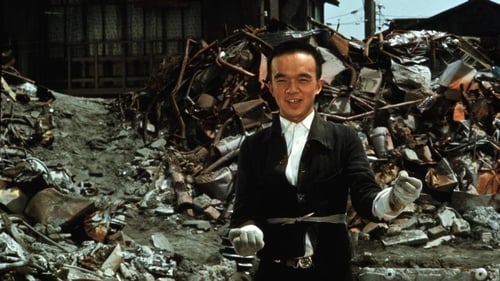
Screenplay
Vários contos na vida de habitantes de favelas de Tóquio, incluindo um jovem mentalmente deficiente obcecado com a condução de seu próprio bonde. Ao mesmo tempo trágico e transcendente, esse filme de Akira Kurosawa acompanha o cotidiano de um grupo de pessoas maltrapilhas em uma favela nos arredores de Tóquio. Por mais desesperadoras que sejam suas circunstâncias, cada um deles - O pai e o filho sem teto imaginando a casa de seus sonhos; A jovem abusada pelo tio; O garoto que se imagina um condutor de bonde - encontra razões para continuar. O inesquecível Dodes'ka-den foi feito num momento tumultuado na vida de Kurosawa. E todas as suas esperanças, medos e paixão artística estão em exibição fervorosa neste filme, seu primeiro filme gloriosamente a cores. (e 12 - Estimado 12 Anos)
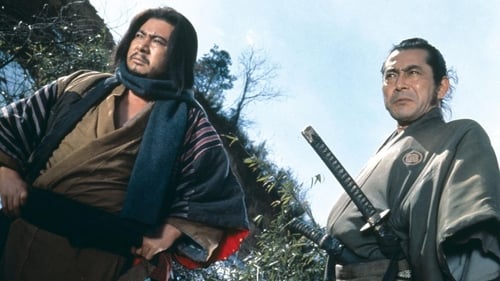
Writer
In the Edo period, a nameless ronin accepts an assignment to go to a mountain pass and wait. Near the pass he stops at an inn where a collection of characters gather, including a gang set on stealing shogunate gold that's soon to come over the pass. When the Ronin's assignment becomes clear, to help the gang, he's ordered to kill the inn's residents, including a woman he's rescued from an abusive husband. He's reluctant to murder innocent people; then he learns that the gold shipment is a trap and he's part of a double cross. How he sorts through these divided loyalties tests of his samurai honor, and perhaps of his love for a woman.

Screenplay
Retrata de forma realista, quase documental, tanto do ponto de vista japonês como do norte americano, mostrando a preparação, os eventos e os erros que possibilitaram o ataque a Pearl Harbor em 7 de Dezembro de 1941, fato que forçou a entrada dos Estados Unidos da América na Segunda Guerra Mundial. O título do filme é o código utilizado em caso de sucesso do ataque japonês, que traduzido para o português significa 'Tigre! Tigre! Tigre!'. A versão Americana tem 02:25. A versão Japonesa é mais longa, com 02:29.

Screenplay
During a Soviet circus tour in Japan, a small street musician, Ken, meets a clown, Yuri Nikulin. Upon learning that his sick father is being treated in the Soviet Union, Ken sets off in search of him. The friendship of the great clown and the boy continues in Moscow.

Script
Sangoro Oiwake runs out of money. He visits rice shop, eat and drink for free, and owners send him to prison. In prison Sangoro will have a new life

Author
No Japão do século 19 , em um hospital de caridade o Dr. Niide (Toshiro Mifune), um médico duro mas honrado, conduz um jovem estagiário sob sua orientação ao longo de inúmeros casos difíceis.
Ambientado em tempos feudais, médico novato, Yuzo Kayama, é enviado para uma enfermaria pobre esperando ser apenas passageiro, mas está furioso ao saber que ele deve ficar. Ele tenta provocar sua dispensa, mas é frustrado pelo médico-chefe "Barba Vermelha" (Toshiro Mifune), um homem cujos métodos são tão carinhosos quanto imprevisíveis.

Screenplay
Eight villains, former pirates, gather to attack the magistrate's office. They develop a plan and begin their actions in secret, making full use of their special abilities. In the end, their plan goes beyond what was intended and turns into a good deed for many people. A masterpiece of historical drama, full of breathtaking thrills and action.

Writer
Misawa Ihei (Nagato) is traveling with his wife Tae (Iwashita Shima) who abhors the practice of sword fighting for prize money. Tae is the daughter of the clan's chief counselor who married the low-ranking Ihei to avoid becoming the clan lord's mistress. Into the mix comes Oba Gunjuro (Tetsurō Tamba), a mysterious ronin who will do anything for money. This leads to a fitting climax as the forces of hate and love converge while the couple attempt to break through the border!

Writer

Original Story
A group of pirates sail the treacherous Pacific ocean in search for wealth.

Screenplay
The warlords overrun the country while the farmers are starving, and forced to become soldiers to keep the wolf from the door. The farmers are recruited in groups of fifteen. In Yaju's village, there are only twelve men, so they press Oto, who looks more like a boy than a girl, to join, disguised as a man.

Screenplay
The womanising master of a run-down dojo hires an unemployed samurai to make himself look good instead of learning the skills himself. He lives to regret this laziness when he falls in love with the daughter of a higher class samurai and is informed on their wedding night that he must defeat her before their marriage can be consumated....
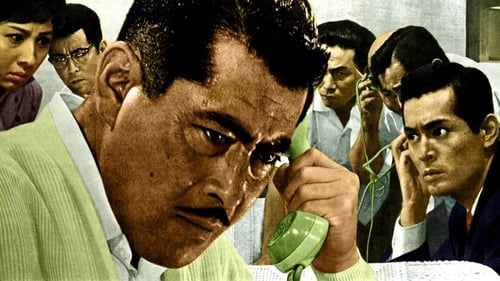
Screenplay
Um executivo de uma empresa de calçados torna-se vítima de extorsão quando o filho de seu motorista é sequestrado e pedem resgate.
O executivo Gondo (Toshirô Mifune) hipoteca tudo o que tem na tentativa de assumir a Companhia Nacional de Sapatos, para manter a empresa fora das mãos dos outros executivos incompetentes e gananciosos. Contudo, o mesmo dinheiro que ele arrecada pode pagar o resgate que possivelmente irá salvara vida de uma criança, levando o executivo a tomar decisões extremas e elaborar procedimentos policiais. A resolução desse dilema - a perda certa da empresa vs a perda provável da criança - cria um drama distinto, e um elaborado procedimento de polícia cria um segundo. (e 12 - Estimado 12 Anos)
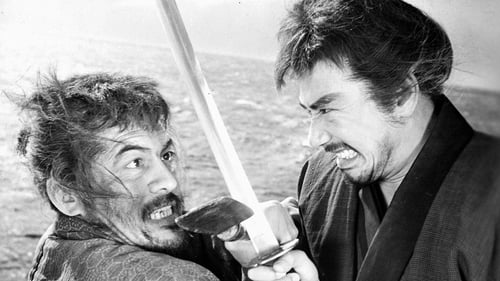
Screenplay
This suspense drama set in the mid 1700's depicts the plan of the Tokugawa rulers to send a number of homeless men to a remote island Sado to perform forced labor. Living conditions on the island are terrible and the men soon become rebellious. Based on a short story by Seichō Matsumoto.
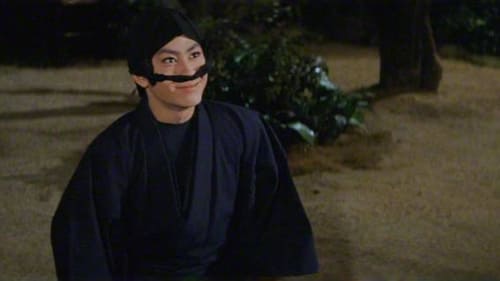
Original Story

Screenplay
Bunkichi disguises himself as a yakuza to solve a mysterious death.
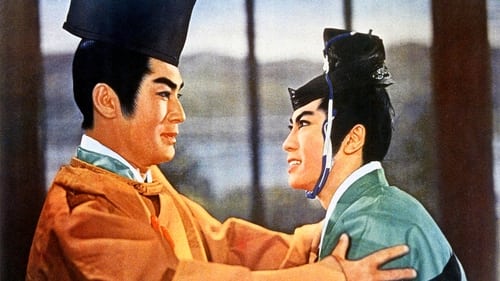
Screenplay
An exciting historical drama that dynamically depicts the life of Minamoto no Yoshitsune from the period of his stay on Mount Kurama to his reconciliation with his brother Yoritomo.

Screenplay
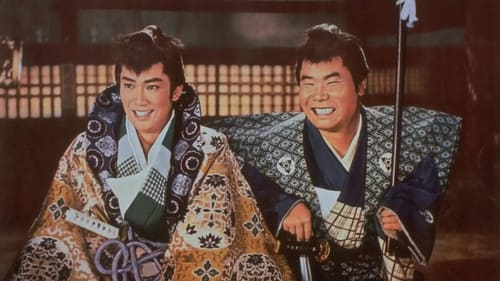
Screenplay
A group of men living a low life in Edo help each other to make the best out of their lives.
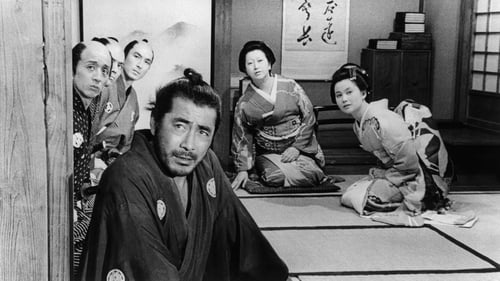
Screenplay
No Japão por volta do século XVIII, nove jovens decidem apresentar uma acusação de corrupção em seu clã ao superintendente local. No entanto, o grupo é traído, mas o ronin Sanjûrô Tsubaki (Toshirô Mifune), um samurai desalinhado e cínico, os salva dos homens do superintendente. Então o tio do líder dos clãs rebeldes, o Chamberlain Mutsuta (Yûnosuke Itô), é seqüestrado e sua esposa e filha são detidas e feitas prisioneiras do superintendente que tenta forçar Mutsuta a escrever uma falsa carta de confissão declarando ser corrupto. Sanjûrô ajuda o grupo a resgatar o Chamberlain e sua família.

Screenplay
A young son of a master of the Kuwana clan gets disowned for his rebellious behavior. After he goes from the mountains to the ocean defeating the evil, he becomes a fine man.

Screenplay
Toei’s 10th anniversary film, featuring an all-star cast from the golden movie era of the 1960s. A famous story of the 47 loyal samurai. When Lord Asano is unjustly executed, his loyal retainers strike back for revenge.

Screenplay
Fishmonger Tasuke and Shogun Iemitsu swap their identities in pretence for the protection of Iemitsu.

Screenplay
A stage director who directs a “Mori no Ishimatsu” play time travels and becomes “Mori no Ishimatsu” himself.

Screenplay
A comedy about a free-spirited man Shosuke, whose life is turned upside down when he is ordered to serve the clan lord.

Writer
Um jovem vingativo se casa com a filha de um industrial corrupto, a fim de buscar justiça pelo suicídio de seu pai. Uma história de Kurosawa sobre o escândalo corporativo no Japão do pós-guerra. Um jovem tenta usar sua posição no coração de uma empresa corrupta para expor os homens responsáveis pela morte de seu pai. (e 14 - Estimado 14 Anos)

Screenplay
Japanese crime film
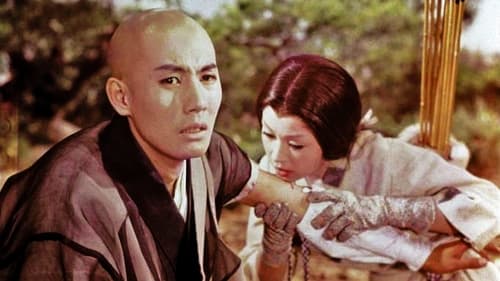
Writer
Princess Kiyo accidentally injures a local priest, Anchin, while on a hunt. She apologizes, but feels irritated by Anchin’s indifference to her in spite of her beauty. One night, while Anchin is recuperating in a hot spring, he is approached by Kiyo. She tells him that she is in love with him.

Screenplay
In 1691 a terrible fire broke out in Denmacho, Yotsuya, burning down the towns around it, up to the shores of Shibaura. A month and a half later, another fire broke out, this time in Komagome, burning down the two gates of Asakusa and Sujikai, and continuing on into the night. As the government Elders consider evidence that these fires were arson, a fire breaks out in Hirakawa-cho, outside of Hanzo Gate. Nishonmaru catches on fire and burns down completely. When this rash of fires even strikes Kyoto, the task of finding who’s behind the arson, and stopping them falls to the Shogun’s uncle, the Elder Lord of Mito. Together with his trusted bodyguards, Kaku and Suke, the trio set of to save Japan from this scourge of evil. Featuring virtually all of their most famous stars, this is the best film in the Toei series about Mito Komon, one of Japan’s most popular historical figures who traveled through the country incognito to check on the people and fight injustice.

Screenplay
One of Japan's most enduring stories is the true-life yakuza boss Jirocho of Shimizu and his gang as they took over the Tokaido Highroad and went on to everlasting fame. Many of the gang members have become household names although their backgrounds and how they came to join the group are mostly lost in the mists of a time gone by. This is the tale of Masa, who arrived in Shimizu Port hungry and down on his luck. His adventures contain some light-hearted moments as he meets up with the other gang members and goes on to join the group and become one of their best swordsmen. A truly exciting tale starring the ever-popular Okawa Hashizo along with all-time great Okochi Denjiro.
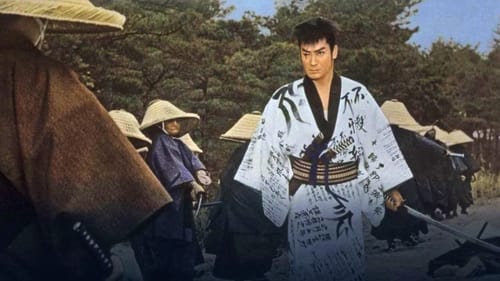
Screenplay
The legendary one-eyed one-armed swordsman Tange Sazen is back to aid a Magistrate in his efforts to steal bribe money on its way to Edo for the benefit to poor farmers.
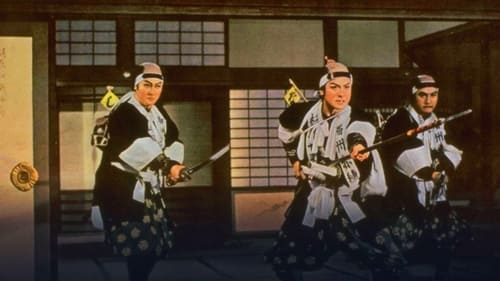
Screenplay
Edo, 1703. Young Sugino, one of the 47 rōnin seeking revenge against lord Kira, who caused that his master, Asano of Ako, committed seppuku, meets a skillful spear fighter, Genban, who trains him to fight with honor on the day of retribution.

Original Story
It's an extravaganza of entertainment as famous magistrate in disguise, Toyama no Kinshiro attempts to confront the elusive thief known as the "Long-Sleeve Burglar". Played to the hilt by Misora Hibari in a delightful performance highlighted by singing, dancing, and swordplay with a unique story within a story twist that starts to unfold in the city jail as a playwright is brought into custody and meets the famed Long-Sleeve Burglar himself. Misora Hibari is totally captivating in this gender bending role as the famed thief whose expoits can only be stopped by the great Kin-san himself!

Writer

Screenplay
Princess Kazu, the daughter of Shogun Ienari, is sent to marry Matsudaira Nobunao, master of Peacock castle in Kozuke province, a domain of 17,000 koku. When the procession carrying her sizable dowry was so large that it was expected to take 30 days to reach the castle the members of the clan were surprised to learn that it contained only her barest essentials! Would her presence create a problem too large for the clan to deal with? And having been trained by Lord Yagyu himself, will her martial skills ruin the marital plans set forth for the couple, or can she be tamed in time for the wedding?
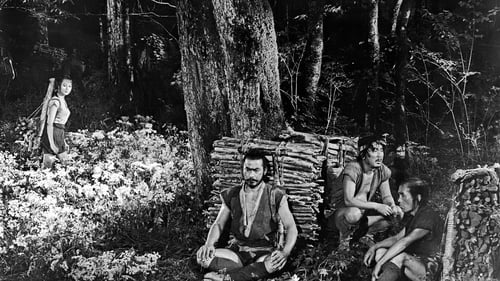
Writer
Ambientado no século dezesseis no Japão, um solitário samurai escolta uma jovem princesa fugitiva através do território inimigo.

Screenplay
Lord Mito Mitsukuni, the vice-shogun of the whole country, left the family estate and went on a trip to various provinces with his students Sukesaburo Sasaki and Kakunoshin Atsumi. At an inn in Sunagawa, Mitsukuni exposed and punished an evil judge who had fallen in love with a townsman's wife. However, on the night he stayed at Nihonmatsu Castle, Mitsukuni found out that this incident was a performance organized especially for him…

Writer

Writer

Screenplay
In 1905, Japan was seriously threatened in the Russo-Japanese War. Japan determined a decisive attack on Russia to end the war. A reconnaissance troop was organized to penetrate into the supreme headquarter of Russia in Tieling Mountain of China to find out the enemy's situation...
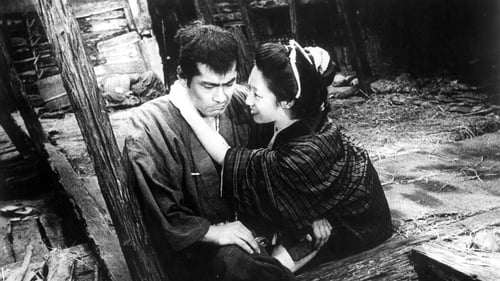
Screenplay
Japão medieval. Em um cortiço degradado de Edo, um homem idoso (Rokubei) e sua amarga esposa (Osugi) alugam quartos e camas aos pobres e miseráveis. Os inquilinos são apostadores, prostitutas, pequenos ladrões e vagabundos bêbados, todos lutando para sobreviver. A chegada recente de Kahei, um homem idoso misterioso, afetuosamente chamado de vovô, dá pelo menos a esperança que há uma vida melhor lá fora, em algum lugar. (e 14 - Estimado 14 Anos)

Screenplay
Historical drama about a sleep-eyed ronin
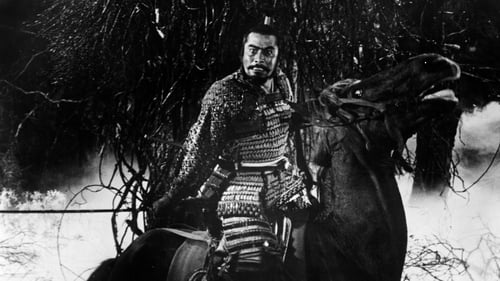
Screenplay
Japão, século XVI. As guerras civis sacodem o país. Dois valentes samurais, os generais Washizu Taketori (Toshirō Mifune) e Miki (Minoru Chiaki), regressam aos seus domínios depois de uma batalha vitoriosa. No caminho, uma misteriosa senhora profetizao futuro de Washizu: o guerreiro se converterá no Senhor do Castelo do Norte. A partir deste fato Washizu, auxiliado por sua esposa Asaji Isuzu Yamada, se vê imerso numa trágica e sangrenta luta pelo poder.
Trono Manchado de Sangue (蜘蛛巣城, Kumonosu-jō?, literalmente "Castelo Teia de Aranha") é um filme japonês de 1957 dirigido por Akira Kurosawa, que transpôs a obra Macbeth de William Shakespeare para o Período Sengoku japonês (séc. XV - XVI).

Screenplay
Historical drama about a sleepy-eyed ronin.

Screenplay

Writer

Screenplay
The story is a dramatization of the Japanese folklore legend of Momotaro, the Peach Boy, who with his trusted companions of dog, monkey and pheasant fought against evil in olden times.

Screenplay
Oiwa has been searching for the one who killed her father for a long time. She comes to Yedo and sees a man named Naosuke. The film is based on the kabuki classic: Toukaidou Yotsuya Kaidan (1826) written by Tsuruya Nanboku and is one of the most famous ghost stories throughout Japan.

Writer

Screenplay
The story of a professional nude model stalked by a bizarre, unknown man wearing a hideous mask.
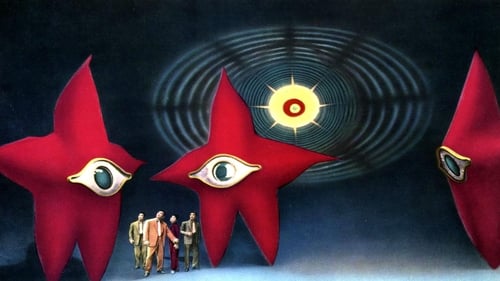
Screenplay
Large star shaped aliens travel to earth in hopes of warning them about an oncoming catastrophe. To prevent panic about their appearance, one alien takes the form of a popular singer.

Writer
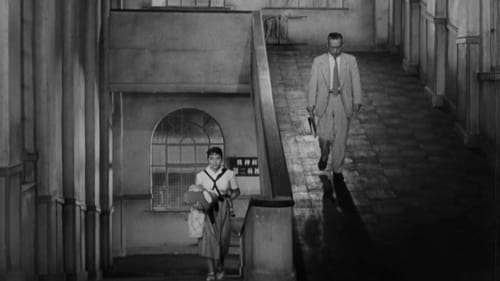
Writer
Kiichi Nakajima, um idoso proprietário de fundição, convencido de que o Japão será afetado por uma guerra nuclear iminente, resolve transferir sua família para a segurança no Brasil. Sua família decide que seja declarado incompetente e o Dr. Harada, um conselheiro do Tribunal Doméstico, tenta arbitrar. (e 12 - Estimado 12 Anos)

Screenplay

Writer
A samurai who slashes a young girl's mage appears in Edo, and she is never caught.

Writer
A narcotics investigator for the harbor police, Eiichi Tsuda, is driven by thoughts of vengeance for the overdose death of his brother and the subsequent decline and death of their mother. Tsuda acts viciously and with disdain for legal niceties in his exploration of the criminal facts behind the explosion of a freighter in the harbor. He goes undercover with a band of drug smugglers, but his methods threaten to destroy him as well as his case.
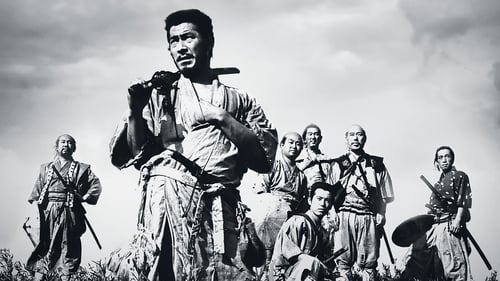
Screenplay
No século XVI, durante a era Sengoku, quando os poderosos samurais de outrora estavam com os dias contados, pois eram agora desprezados pelos seus aristocráticos senhores. Kambei (Takashi Shimura), um guerreiro veterano sem dinheiro, chega em uma aldeia indefesa que foi saqueada repetidamente por ladrões assassinos. Os moradores do vilarejo pedem sua ajuda, fazendo com que Kambei recrute seis outros ronins (samurais sem mestre), que concordam em ensinar os habitantes como devem se defender em troca de comida. Os aldeões dão boas-vindas aos guerreiros e algumas relações começam. Katsushiro (Ko Kimura) se apaixona por uma das mulheres locais, embora os outros ronins mantenham distância dos camponeses. O último dos guerreiros que chega é Kikuchio (Toshiro Mifune), que finge estar qualificado mas na realidade é o filho de um camponês que almeja aceitação.

Screenplay
If two clouds go away, the eyes of a maiden who gets wet in tears, Tsukaman Aise who earnestly wished, and the two who cried under the harsh trials of ten years when they fell in love and fell in love, climbed the hill of memories again. Surprisingly, there was an event that turned a moment of joy into tears ...

Screenplay
Gosho’s most celebrated film both in Japan and the West, Where Chimneys Are Seen is perhaps the most compelling example of his concern for, and insights into, the everyday lives of lower-middle-class people. Based on Rinzo Shiina’s novel of the absurd, the film depicts the lives of two couples against the backdrop of Tokyo’s growing industrialization during the 1950s.

Writer
Futari no hitomi (二人の瞳, Futari no hitomi, The Eyes of Two People) a.k.a. Girls Hand in Hand (USA title) is a 1952 black-and-white Japanese film directed by Shigeo Nakaki.
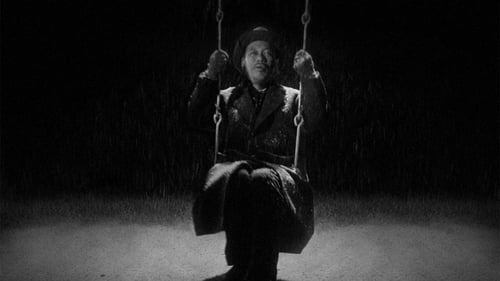
Screenplay
Burocrata de longa data, que não liga para nada que não o interessa, descobre que está com câncer. Decide, então, construir um playground em seu bairro, tentando descobrir um sentido para sua vida.

Screenplay
Buntaro, the president of a food trading company got tired of the day-to-day routine of life. The new secretary, Nobuko, suggested her "shacho-san" (the president) run away from the job. Nobuko took Buntaro to her home and introduced him to her own family as friend, "Sachio-san"...

Writer

Writer
___________

Story
Wataru Naohiko who has the prosecutor general as his father became a young composer and its symphony "saint" invoked the world echoed. But his disciple Uchiyama and his best friend prosecutor Daisuke Toki accused his music as a sesame of pause-only technique, not a truly heart-hungry art.

Writer
Melodrama by Kiyoshi Saeki

Writer

Screenplay
Omnibus of love stories from 1947 directed by famous directors, featuring big stars.

Screenplay
Lord for a Night is a 1946 Japanese film directed by Teinosuke Kinugasa.

Writer
In A Tale of Archery, young, timid bowmaster Kazuma (Akitake Kôno) seeks to beat the archery record set by Hoshino Kanzaemon, a mysterious figure who, it is rumored, drove the previous champion (Kazuma’s father) to suicide. Possessed of much raw talent, Kazuma is also very much a coward, holing himself up in an inn run by the kindly Okinu (Kinuyo Tanaka) and generally avoiding confrontation of any sort. Despite his clandestine manner, enough of the locals know of Kazuma’s purpose and an attempt is made on his life. He is saved by Karatsu Kanbei (Kazuo Hasegawa), a samurai who offers to help Kazuma hone his archery skills, though it soon becomes clear that this apparently selfless stranger has several potentially shady ulterior motives.

Screenplay

Screenplay
Japanese Warmovie

Screenplay
This film was made by the Japanese occupation authorities in the Philippines as a propaganda film to show the Philippine people the "benefits" of the Japanese invasion and takeover of their country.

Screenplay
The Opium War is a 1943 black-and-white Japanese film directed by Masahiro Makino. "Ahen senso" in Japan refers to the First Opium War. The story of the film concerns this war.

Writer
1942 adaptation of Izumi Kyoka's novel.

Screenplay
A bizarre murder at a hot springs resort threatens to disrupt an Edo detective's (Hasegawa) vacation. When his hot-blooded wife (Yamada) starts snooping around, however, he finds himself reluctantly drawn in to the case.

Writer
What is marriage? Young couple in match-making wanted to know before they decide. They visited married couples of sisters and brothers. Love comedy in 1942.

Screenplay

Original Story

Writer
A sentimental tale of the filial love between shogun Iemitsu (matinee idol Hasegawa) and his loyal old retainer Hikoza (comedian Roppa, playing somewhat against type).

Writer
Feature film.

Screenplay
An actor, hit on the head, dreams that he has become legendary one-eyed gangster Mori no Ishimatsu.

Original Story
An actor, hit on the head, dreams that he has become legendary one-eyed gangster Mori no Ishimatsu.

Screenplay
Wartime propaganda filmed by the Japanese in occupied China, Shirley Yamaguchi portrays an orphan rescued from the streets by a kindly Japanese merchant marine officer. Part spy thriller and part Shanghai travelogue, it was part of a popular series known as "Chinese Continental Friendship" made by the occupying Japanese in China.

Original Story

Screenplay

Writer
My Daughter's Only Wish tells the story of a poorly paid and clumsy office clerk, played with much comedic talent by Atsushi Watanabe. His biggest problem: His daughter Hideko is too clever and is expected by her teachers to enter the school for higher girls after graduating from primary school. But how is our poor clerk supposed to pay the school fees? How does poor Hideko feel about the situation? How can they cope with the envious colleagues who have less brighter daughters? And - an important question for Hideko's mother - what will the neighbours think? What's the point about getting a good education for girls anyway?

Writer
This is the only surviving “Mito Komon Manyu-ki” film. This release also known as "Adrift Tour Memoir" or literally "Mito Komon's Pleasure Trip" is an 80-minute compilation of the first (東海道の巻 or "Tokaido no maki") and second (日本晴れの巻 or "Japan's Fine Weather Reel") parts (147 minutes), which were re-edited and screened at a time when presentable films were dried up immediately after the defeat of the war.

Screenplay
An irreverent take on a medieval Noh drama, Hokaibo sees Enoken play the titular monk whose lusts drive him to murder.

Adaptation

Screenplay
A captivating operetta by Masahiro Makino based on Juppensha Ikku's humorous novel "Tōkaidōchū Hizakurige" starring Chiezo Kataoka and Kyoji Sugi.




































